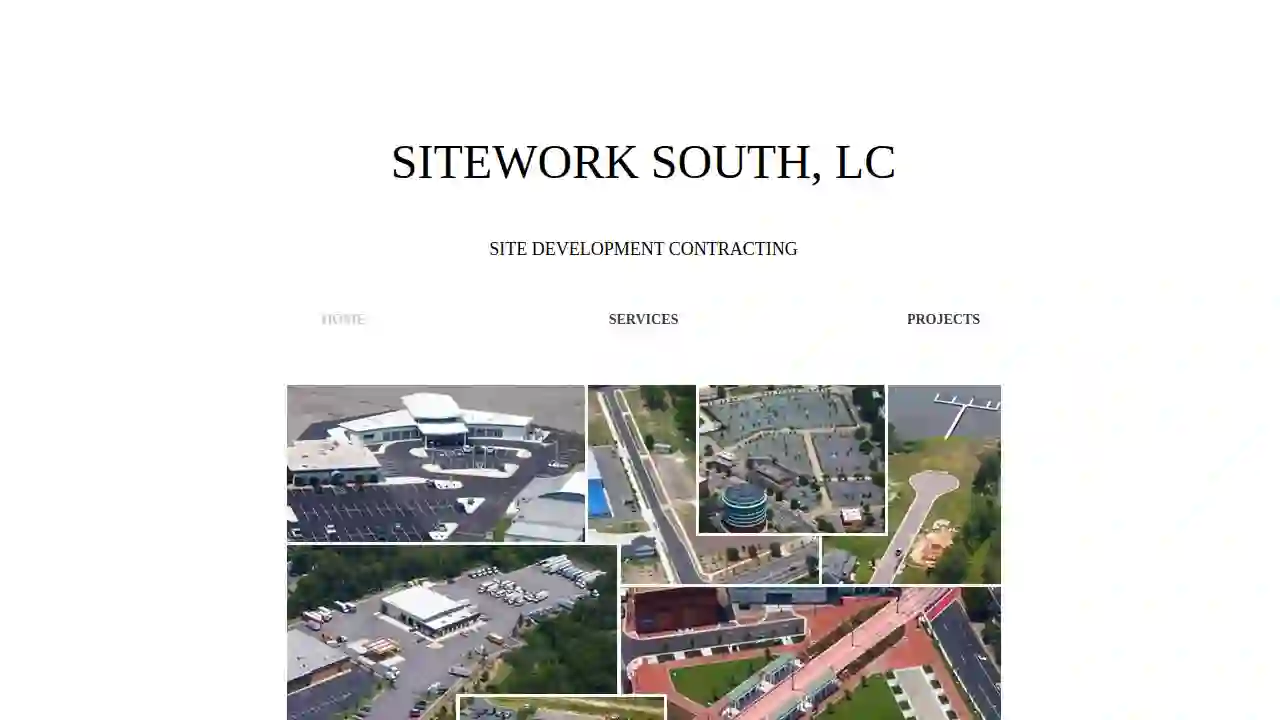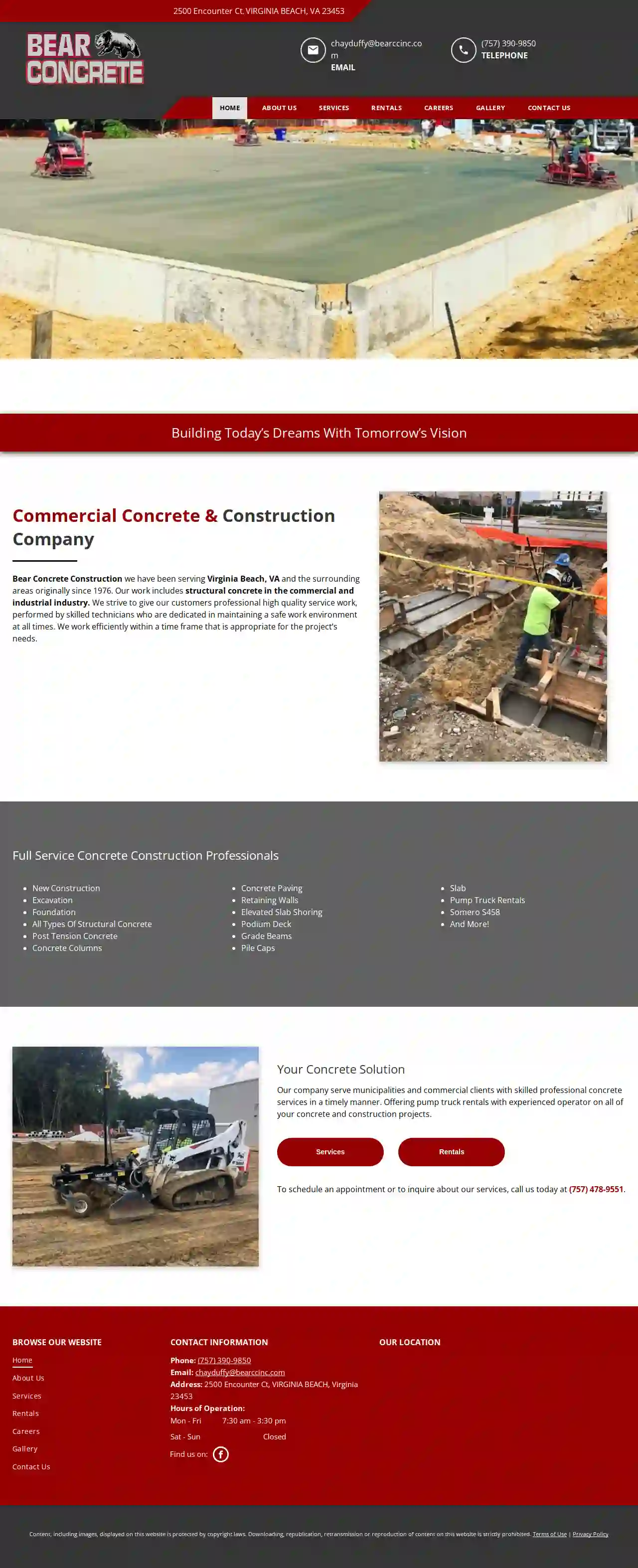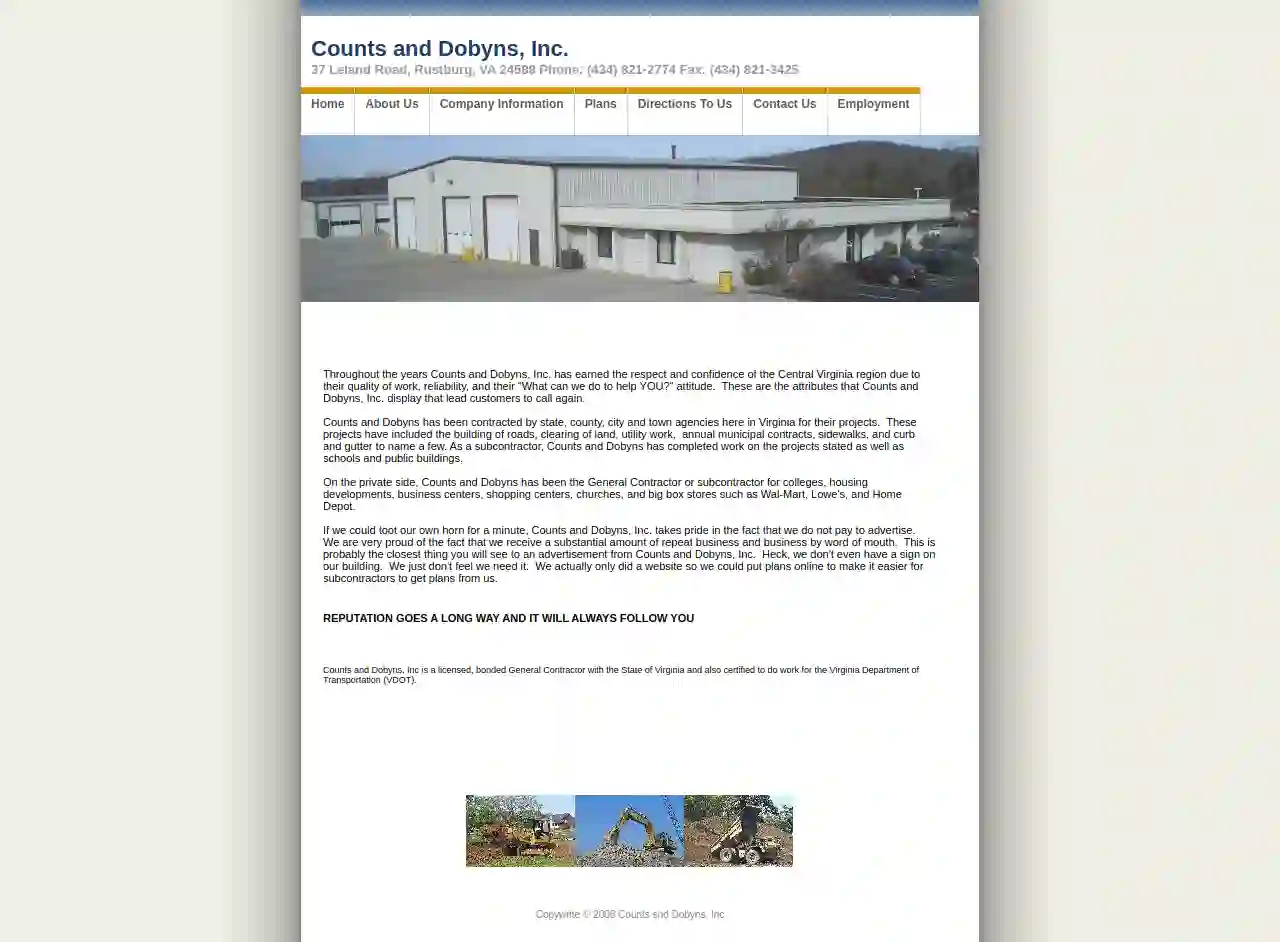Demolition Contractors University Center
Best Demolition Contractor in University Center
Receive multiple Demolition Experts quotes for your project today! Compare profiles, reviews, accreditations, portfolio, etc... and choose the best service.

Phillips Outdoor Services
518 reviewsChesapeake, USWelcome to Phillips Outdoor Services We specialize in outdoor land clearing, land grading & excavation, demolition, and bulk material hauling & removal in Virginia Beach, VA & surrounding areas including Norfolk, Chesapeake, Suffolk, and Moyock, NC. The highest quality work at fair prices is backed by Phillips Outdoor Services excellent customer service and a quality guarantee. Your Project Is Our Passion! Customer satisfaction is guaranteed at Phillips Outdoor Services. Completing every project with the highest quality and satisfying our customers are our top priorities when it comes to every project we handle. At Phillips Outdoor we often have repeat customers and are often referred to their family and friends! We service Hampton Roads, VA, and parts of Northeast North Carolina. We look forward to speaking with you about your next project.
- Services
- Why Us?
- Testimonials
- Gallery
Get Quote
William Anna Contracting Chesapeake Kitchen Remodeling Contractors
4.58 reviewsVirginia Beach, USVirginia Beach Kitchen Remodeling Contractors for Home, Bath Renovations & Open Floor Remodel in Virginia Beach, & Norfolk, VA Looking for the most complete, high-end Virginia Beach kitchen remodeling contractors in the local Virginia Beach, & Norfolk, VA, areas? Need the best open floor plan design home improvement contractor ideas for your bathroom and kitchen renovation projects? Let the design and remodeling experts, at Home Remodel Virginia Beach, help you every step of the way. High-End Home Improvement Contractor in Virginia Beach, Chesapeake, Norfolk & Portsmouth, VA Proud to say, we are an expert general contractor service in Chesapeake, Hampton Roads, Norfolk, Suffolk and Newport News, VA. Specializing in certain kinds of residential and commercial construction. We offer premium renovations or interior fit-outs, and complete roofing services. Learn More Home Open Floor Remodeling & New Home Construction Home Remodeling Virginia Beach Construction offers expert home open floor remodeling, and new home construction. The services also include exquisite, high end kitchen and bath renovation services in Virginia Beach, VA. Experience with well over 30 + years as a reputable new home builder, and general contractor, we will cater to your every need. Large Home Open Floor Remodeling Contractors in Virginia Beach, and Chesapeake, VA Searching for new ideas and need a Large Home Remodeling Contractors in Virginia Beach, VA to help guide you? Naturally, the certified design and architecture experts at William Anna is the best choice for anyone looking for a large-scale home renovation or construction project. Over 30 Years Experience Building Trust in the Local Virginia Beach Community Specialties include, are large home remodeling and new home construction as well as building commercial spaces. Having over 30+ year experience, we have worked on building the trust of our local community and consistently perform honest, professional work that’s worth your time and investment. New Home Construction Contractor in Virginia Beach A successful construction company in Virginia Beach, specializing in all types of custom, high-end construction projects for homes and commercial spaces. With William Anna Construction, no project is to small or to big. Luxury kitchen remodeling, & bathroom renovation At Home Remodeling Virginia Beach, we pride ourselves in offering luxury kitchen remodeling, & bathroom renovations for our clients. Everything from new home construction and general contracting services, to roofing. we have got you covered. Proudly offering services to the, Chesapeake, Suffolk, Norfolk, (beach Condos) Chesapeake Williamsburgh, and surrounding communities.
- Services
- Why Us?
- Our Team
- Gallery
Get Quote
Sitework South
32 reviewsPO Box 4116, Suffolk, 23439, USAbout Sitework South, LC Sitework South, LC is a Virginia-based company that specializes in site development contracting. We are committed to delivering projects on time and within budget, and our experienced workforce ensures that your project meets its schedule. We understand that a realistic timeline and budget are crucial for project success, so we encourage you to leverage our knowledge and experience early in your planning process. We look forward to collaborating with you to bring your project to life. Sitework South, LC was incorporated in Virginia in July 2005 by company president Lee Grover. We are a licensed Class A Virginia Contractor holding heavy highway and commercial building classifications. Our team includes several Virginia Department of Environmental Quality Responsible Land Disturber certificate holders. We are also a prequalified contractor with the Virginia Department of Transportation. Sitework South frequently acts as the site general contractor, working directly with municipalities or commercial property owners. Our contracts typically encompass a wide range of services, including: • Estimating • Project Management • Supervision • Erosion Control • Clearing • Demolition • Earthwork • Grading • Water and Sewer • Storm Drainage • Site Electrical • Site Concrete • Stone Base • Paving • Traffic Control
- Services
- Why Us?
- Our Team
- Gallery
Get Quote
Elevation Excavating And Concrete
34 reviewsP.O. Box 305, Colonial Beach, 22443, USYour Dependable Partner Excavation Contractor In Virginia Helping Ensure the Completion and Quality of Every Project Call Today Experience Efficient and Hassle-Free Land Development With Us Elevation Excavating and Concrete is a locally owned and operated construction solutions company located in Colonial Beach, Virginia. We offer our land development services in different areas across the Washington D.C. metropolitan area, Maryland, and Virginia. These include Fredericksburg, Montross, Spotsylvania, King George, Caroline counties and more. Industry Experts Dedicated to Providing Reliable Services Our company is licensed, bonded, and insured. As part of our commitment to providing excellent customer service, we deliver reliable, fast, and punctual excavation and concrete work solutions. Through this, we have built a reputation that gives our clients confidence and security in the efficient completion of their construction projects. Read More About Us Why Choose Us When you work with our team, we are committed to providing outstanding service in a timely manner to help get the job done. You can rest assured that we’ll get the job done right the first time, no matter how big or small your land development project may be. Work With Us for Your Next Project Let us help you with your land construction needs! If you have any questions or concerns about the services we offer, please do not hesitate to contact us anytime. We will get back to you with a reply as soon as possible. Inquire Now
- Services
- Why Us?
- Gallery
Get Quote
Bear Concrete & Construction INC
4.610 reviews2500 Encounter Ct, VIRGINIA BEACH, 23453, USBuilding Today’s Dreams With Tomorrow’s Vision Commercial Concrete & Construction Company Bear Concrete Construction has been serving Virginia Beach, VA and the surrounding areas since 1976. Our work includes structural concrete in the commercial and industrial industry. We strive to give our customers professional high quality service work, performed by skilled technicians who are dedicated in maintaining a safe work environment at all times. We work efficiently within a time frame that is appropriate for the project’s needs.
- Services
- Why Us?
- Gallery
Get Quote
Counts & Dobyns Excavating Inc
3.79 reviews37 Leland Road, Rustburg, 24588, USAbout Counts and Dobyns, Inc. Counts and Dobyns, Inc. has earned a strong reputation in Central Virginia for its commitment to quality work, reliability, and customer service. Their motto, "What can we do to help YOU?" reflects their dedication to exceeding client expectations. This dedication has resulted in a loyal customer base who consistently return for their services. Counts and Dobyns has a proven track record of working with state, county, city, and town agencies in Virginia. Their projects have included road construction, land clearing, utility work, annual municipal contracts, sidewalks, and curb and gutter installations. As a subcontractor, they have also contributed to projects involving schools and public buildings. In the private sector, Counts and Dobyns has served as both a general contractor and subcontractor for a diverse range of clients, including colleges, housing developments, business centers, shopping centers, churches, and major retailers like Wal-Mart, Lowe's, and Home Depot. Counts and Dobyns takes pride in its reputation and the fact that it doesn't rely on advertising. Their strong word-of-mouth referrals and repeat business are a testament to their commitment to quality and customer satisfaction. They believe in building relationships and delivering exceptional results, which is why they don't even have a sign on their building. Their website serves as a platform to share plans with subcontractors, streamlining the project process. Counts and Dobyns, Inc. is a licensed, bonded General Contractor with the State of Virginia and is also certified to do work for the Virginia Department of Transportation (VDOT). Their commitment to quality, reliability, and customer service has earned them a well-deserved reputation as a trusted partner in the Central Virginia region.
- Services
- Why Us?
- Gallery
Get Quote
Roto-Rooter Plumbing & Water Cleanup
4.8Virginia Beach, USVirginia Beach Plumbers Near You Virginia Beach Plumbing and Drain Solutions: Licensed Virginia Beach Plumber Providing Emergency Plumbing and Drain Services 24/7 Roto-Rooter is a licensed plumber in Virginia Beach, VA offering a full selection of plumbing services ranging from drain cleaning and toilet repair to leak detection. Our local plumbing services are provided by seasoned plumbing professionals who can take care of any problems from routine plumbing service, maintenance and repairs, to leaky toilets, clogged drains, and bigger, more complex plumbing emergencies. We are available 24/7 to offer you residential and commercial plumbing services that customers in Virginia Beach have relied upon for decades. We understand plumbing emergencies don't always occur during regular daytime hours. Roto-Rooter does not charge extra for plumbing or drain service on nights, weekends or holidays and there’s no trip charge. Providing America with top-notch plumbing service for more than 85 years, Roto-Rooter is Virginia Beach's to
- Services
- Why Us?
- Testimonials
- Gallery
Get Quote
Eastern Carolina Construction, Inc.
3.65 reviews154 US Hwy 158 East, Camden, 27921, USABOUT Eastern Carolina Construction, Inc is a turn key heavy civil contractor. We specialize in land development and wet utility construction. Our client base is as diverse as we are. We are driven to produce quality projects on time and on budget. Our crews specialize in the following: Residential & Commercial Subdivision Development Commercial Site Development Excavation and Grading Water Main Gravity Sewer Sanitary Sewer Lift Stations Storm Drainage Directional Drilling Jack and Bore Casing Installations Concrete and Asphalt Paving In addition to new construction work, we provide 24 hr emergency repair services to municipalities for all wet utilities. As a modern earthwork company, we utilize the latest GPS equipment and machine control to improve accuracy and speed production. Our 3D models are created in-house with the latest CAD software. But these are only tools of the trade. What sets us apart is our skilled operators and dedicated superintendents that provide the "know how" to make critical decisions in the changing field environment. Our crews are teams of professionals working together toward a common goal....a quality work product.
- Services
- Why Us?
- Gallery
Get Quote
Spence Marine Construction
52 reviews3117 Lynn Acres Road, Virginia Beach, 23452, USA History of Excellence Spence Marine Construction, Inc., founded in 1993 by Raymond "Lee" Spence and his wife Suzanne, is a leading commercial and residential marine contractor providing a broad range of turn-key marine construction solutions and specialty services on, over, and under the water throughout the Hampton Roads area of Virginia. Our services include marine facility construction, repair, and maintenance, service dock and boat slip fabrication, as well as specialty services. Over the last two decades, we have established many solid partnerships enabling us to tackle small residential tasks and large-scale projects including salvage, demolition, excavation, rehabilitation, and repair. Our Company is headquartered in Virginia Beach, Virginia, and has over 20 years of successful operations. Here at Spence Marine Construction, we value our customers, which translates directly into quality service, professional practice, and exemplary workmanship. We understand the importance of fostering lasting relationships and maintaining a good reputation on and off the work site, so we insist on treating each and every customer fairly by keeping our prices honest and competitive.
- Services
- Why Us?
- Our Team
- Gallery
Get Quote
Myers Dirtworks LLC
52 reviewsRoanoke, USAbout Myers Dirtworks Virginia’s Best Land Clearing Provider Myers Dirt Works, LLC is a Virginia land clearing company based out of Rocky Mount, VA. Our company provides professional land clearing, excavation, grading, & many other land related services. We service both residential and commercial clients, guaranteeing a quality outcome on every one of our projects. To learn more about our services, please contact us at: (724) 557-8419
- Services
- Why Us?
- Gallery
Get Quote
Over 22,076+ Excavation Companies onboarded
Our excavation experts operate in University Center and surrounding areas!
ExcavationHQ has curated and vetted the Best Excavation Contractors arround University Center. Find the most reliable pro today.
Frequently Asked Questions About Demolition Contractors
- Site Security: Secure the demolition site with fencing and warning signs to prevent unauthorized access.
- Personal Protective Equipment (PPE): Workers should wear appropriate PPE, including hard hats, safety glasses, gloves, and steel-toe boots.
- Hazardous Material Removal: Properly identify and remove asbestos, lead paint, or other hazardous materials before demolition begins.
- Utility Disconnections: Disconnect all utilities, such as electricity, gas, and water, before demolition.
- Controlled Demolition Techniques: Employ controlled demolition methods to minimize risks and ensure the structure comes down safely.
- Dust Control: Implement dust suppression measures, such as water spraying or misting, to reduce airborne particles and protect air quality.
- Emergency Planning: Have an emergency plan in place, including communication protocols and evacuation procedures, in case of unforeseen events.
- Waste Generation: Demolition generates a large volume of debris, contributing to landfill space and potentially releasing harmful substances into the environment if not disposed of properly.
- Air Pollution: Dust and particulate matter released during demolition can impact air quality, affecting human health and the environment.
- Noise Pollution: Demolition activities can generate significant noise, disturbing nearby residents and wildlife.
- Resource Depletion: Demolition consumes resources that could be salvaged and reused, contributing to resource depletion and environmental degradation.
- Implosion: Using explosives to collapse a structure inwards rapidly. Suitable for large buildings in open areas.
- Wrecking Ball: Swinging a large steel ball to impact and break down the structure. Effective for bringing down walls and other solid elements.
- High-Reach Demolition: Utilizing specialized excavators with extended arms and demolition attachments for dismantling tall structures piece by piece.
- Selective Demolition: Removing specific parts of a building while preserving other sections. Often used in renovation projects.
- Deconstruction: Carefully dismantling a building to salvage reusable materials, reducing waste and environmental impact.
What are the safety precautions for demolition?
What are the environmental impacts of demolition?
How long does a demolition project take?
What are the different types of demolition?
What are the safety precautions for demolition?
- Site Security: Secure the demolition site with fencing and warning signs to prevent unauthorized access.
- Personal Protective Equipment (PPE): Workers should wear appropriate PPE, including hard hats, safety glasses, gloves, and steel-toe boots.
- Hazardous Material Removal: Properly identify and remove asbestos, lead paint, or other hazardous materials before demolition begins.
- Utility Disconnections: Disconnect all utilities, such as electricity, gas, and water, before demolition.
- Controlled Demolition Techniques: Employ controlled demolition methods to minimize risks and ensure the structure comes down safely.
- Dust Control: Implement dust suppression measures, such as water spraying or misting, to reduce airborne particles and protect air quality.
- Emergency Planning: Have an emergency plan in place, including communication protocols and evacuation procedures, in case of unforeseen events.
What are the environmental impacts of demolition?
- Waste Generation: Demolition generates a large volume of debris, contributing to landfill space and potentially releasing harmful substances into the environment if not disposed of properly.
- Air Pollution: Dust and particulate matter released during demolition can impact air quality, affecting human health and the environment.
- Noise Pollution: Demolition activities can generate significant noise, disturbing nearby residents and wildlife.
- Resource Depletion: Demolition consumes resources that could be salvaged and reused, contributing to resource depletion and environmental degradation.
How long does a demolition project take?
What are the different types of demolition?
- Implosion: Using explosives to collapse a structure inwards rapidly. Suitable for large buildings in open areas.
- Wrecking Ball: Swinging a large steel ball to impact and break down the structure. Effective for bringing down walls and other solid elements.
- High-Reach Demolition: Utilizing specialized excavators with extended arms and demolition attachments for dismantling tall structures piece by piece.
- Selective Demolition: Removing specific parts of a building while preserving other sections. Often used in renovation projects.
- Deconstruction: Carefully dismantling a building to salvage reusable materials, reducing waste and environmental impact.